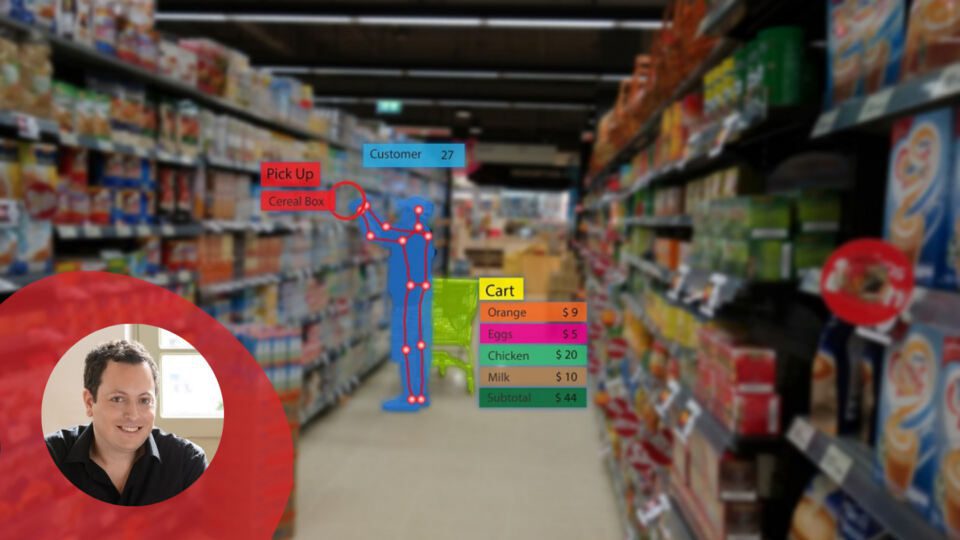The focus on customer behavior and overall satisfaction has increased monumentally in recent years. Nothing irritates shoppers more than when they don’t feel seen or understood; this notion has slowly and steadily grown from a “nice to have” offering to a “must have” for businesses.
The use of technology in retail is one place we see this every day — shoppers have an expectation of service and convenience, and the only way to keep them loyal is to hear and learn from them. When we rethink the power of computer vision and frictionless technology, we can start to see the real business impact — not just today but for years to come.
The intersection of physical retail and online offerings is where shoppers want to be. This holistic experience serves as a bridge between the past and the present, as well as the future. Digitizing the physical retail space takes this concept to the next level, offering service and options like never before. As retailers reflect on customer experiences, it is important to ask why individuals are choosing them over competitors, and what they can offer to make them return. Simultaneously, understanding the elements customers dislike the most — including long lines and tedious checkout processes — is key to unlocking long-term success.
A convenient and satisfying shopping experience is what customers appreciate, and in order to deliver, retailers need to innovate their technological offerings and ensure shopper-product interactions are reflective of insights gathered. In fact, according to dunnhumby’s recent Retailer Performance Index (RPI), “2021 was the year that grocery retail became truly omnichannel.” The report goes on to highlight how digital’s share of total grocery sales more than doubled during the pandemic — which illustrates the shift and how retailers can best win with customers.
Gone are the days of single-channel shopping experiences; with the ongoing enhancements in retail, customers are seeing technology at nearly every step. From receipts being delivered via email or app to numerous in-store transaction and code redemption options, retailers are melding models left and right. As a result, the benefits to customers are limitless, including faster checkout times and targeted product offerings to name a few.
Computer vision allows retailers to truly transform the way people shop, delivering fully automated, seamless checkout capabilities. Challenging encounters can taint the customer-retailer relationship so it’s paramount that any addition to a retail concept is enhancing the experience, rather than hindering.
Many shoppers have a specific intention when visiting a store — with a list of items needed, they expect to be in and out with what they want to purchase. When the use of technology can make that moment even more streamlined, the likelihood of a return visit is greater. Further, unplanned purchases are possible when the shelves are merchandised to draw attention, which ultimately increases the overall spend per customer. This is possible when items typically purchased together are merchandised in a way that encourages the added spend; what might seem like an impulse buy is also rational.
Technology inputs are extremely effective when they complement customer intuition — filtering shopping patterns and putting data to use will surely result in positive experiences across the board. What matters to shoppers is that a retailer learns their behavior and delivers offers/options to them that not only make sense, but also resonate. Having the ability to realign any missteps is just as important, as the customer can see a measurable change in output and interactions. According to the 4th edition of the State of the Connected Customer report, “91% of customers say they’re more likely to make another purchase after a great service experience.”
Though the retail space and introduction of cashierless technology is not something we will see implemented overnight, it will certainly be a focus for the months and years ahead. What is possible today only stands to improve and, if done right, positive customer experiences will be second to none.
Michael Gabay is Co-founder and CEO at Trigo. Leading a startup with AI at its core is not without its challenges: technological complexities, innovative R&D, futuristic user experience, trust and safety, and managing a global workforce. At Trigo, a computer vision company reshaping the grocery retail business, Gabay applies two decades worth of experience in creative problem solving and complex systems to drive Trigo to new heights. With the profound belief that no mission is impossible, he maintains that with the right plan, investment and collaboration amongst team members, success is possible, and he is bringing that passion to fruition as CEO and Co-Founder of Trigo.




